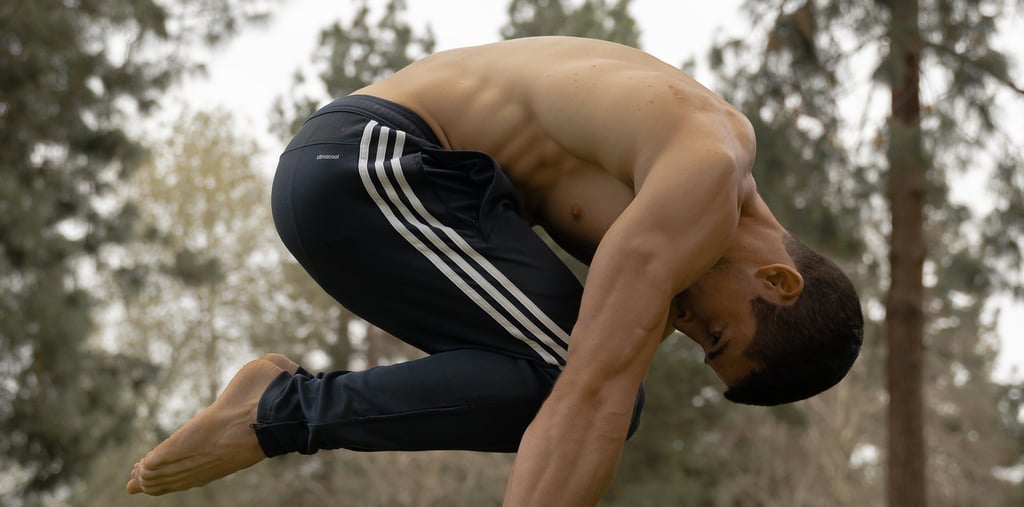Understanding Shoulder Mobility & Flexibility
Think of your shoulder like a golf ball sitting on a tee—the ball (your humeral head) is much larger than the tee (your glenoid cavity in the scapula). This gives your shoulder incredible freedom of movement, but it also makes it prone to instability and injury.
Yonatan Mishan
2/16/20252 min read


Understanding Shoulder Mobility & Flexibility
Think of your shoulder like a golf ball sitting on a tee—the ball (your humeral head) is much larger than the tee (your glenoid cavity in the scapula). This gives your shoulder incredible freedom of movement, but it also makes it prone to instability and injury.
Your shoulder’s mobility is influenced by four key factors:
✅ The Shoulder Joint (Glenohumeral Joint) – Allows large movements.
✅ The Shoulder Blade (Scapula) – Moves to assist the arm (scapular stability is key!).
✅ The Thoracic Spine – A tight upper back can restrict shoulder movement.
✅ Muscles & Tendons – The rotator cuff, deltoids, traps, and lats all contribute to motion.
To optimize shoulder function, we need to focus on three essential areas: mobility, flexibility, and stability.
1. Shoulder Mobility – Expanding Your Range of Motion
Mobility is the ability to actively move your shoulders through their full range with control. If you lack mobility, simple overhead movements may feel restricted or uncomfortable.
Key Mobility Factors:
🔹 Thoracic Extension & Rotation – A stiff upper back limits shoulder movement.
🔹 Scapular Control – Your shoulder blades should glide smoothly with arm movements.
🔹 Joint Capsule Mobility – Stretching and mobilization help free up movement.
Best Exercises for Shoulder Mobility:
✔️ Wall Angels – Stand with your back against a wall and slide your arms up and down, maintaining contact.
✔️ Thoracic Extensions on a Foam Roller – Helps loosen up the upper back.
✔️ Controlled Shoulder Circles (CARs) – Move your shoulder in a slow, full circle, maintaining tension throughout.
2. Shoulder Flexibility – Stretching the Right Areas
Flexibility refers to your passive range of motion (how far your muscles can stretch). Tight pecs, lats, or traps can pull your shoulders out of alignment, limiting movement and increasing injury risk.
Best Stretches for Shoulder Flexibility:
✔️ Pec Stretch Against a Wall – Opens up the chest and improves posture.
✔️ Lat Stretch on a Bench – Kneel, place your elbows on a bench, and sink your chest down.
✔️ Sleeper Stretch – Targets the rotator cuff and internal rotation.
3. Shoulder Stability – Strength + Control
Stability keeps your shoulders healthy and resilient. Your rotator cuff and scapular stabilizers play a crucial role in preventing injuries and maintaining strong, pain-free movement.
Best Exercises for Shoulder Stability:
✔️ Face Pulls – Strengthens the rear delts and traps to counteract poor posture.
✔️ Bottoms-Up Kettlebell Press – Challenges stability with an unstable load.
✔️ Prone Y-T-W Raises – Strengthens the lower traps and rotator cuff.
How to Make the Most of Your Shoulder Health
💡 Move Daily – Shoulders get stiff quickly when not used.
💡 Balance Push & Pull – Too much pressing (bench press, push-ups) without pulling (rows, face pulls) creates imbalances.
💡 Strengthen the Small Muscles – Your rotator cuff and scapular stabilizers are crucial for injury prevention.
💡 Fix Posture – A hunched-over posture reduces shoulder function.
💡 Test Your Range – Can you lift your arms overhead without arching your lower back? If not, you likely have mobility restrictions.
Want a Personalized Shoulder Mobility Plan?
If you’re dealing with stiffness, discomfort, or just want to move better, let’s build a plan tailored to you.
Reach out today! 💪
